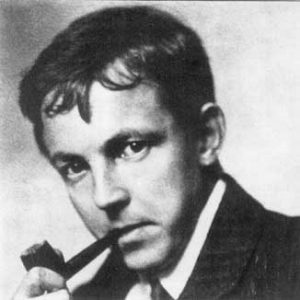
The number 1729 acquired a life of its own in the most famous of the anecdotes that weave the relationship between Hardy and Ramanujan. This is how Hardy described it in the obituary he published after Ramanujan’s death in 1920: “Ramanujan could remember the idiosyncrasies of numbers in an almost extraordinary way. It was Littlewood (I think) who said that every positive integer was a personal friend of Ramanujan. I remember visiting him once when he was sick in Putney. I had got into a taxi with number plate 1729, and I complained that the number was so unremarkable and hoped that it was not a bad omen. “No,” Ramanujan replied, “that’s a very interesting number. It is the smallest number that can be written in two different ways as the sum of two cubes”\(.\)
It should be noted that Hardy was in the habit of playing with the numbers he randomly encountered in his daily life. Hardy had been practising it since he was a child when, bored in church, he would factor the number of each psalm the congregation sang.
Back to the number 1729. If the reader has a calculator at hand, and even without one, it is easy to see that
$$ 1729=9^3+10^3=1^3+12^3. $$
What is not so simple is to see that this number is the smallest with this peculiar property. The truth is that Ramanujan had already played with this number long before, since it appears written on page 221 of his second notebook.

However, Ramanujan was not the first to look at the number 1729. The French jurist Pierre de Fermat, the greatest amateur mathematician who ever lived, held correspondence with French and English mathematicians in the mid-17th century about possible numbers that could be written in two different ways as the sum of two cubes, and the number 1729 appears in that correspondence.
Using Ramanujan’s number, a magic square of size 4×4 can be formed, of which all the elements are cubes – something that, had he known it, would certainly have delighted the Indian genius:
| 163 | 203 | 183 | 1923 |
| 1803 | 813 | 903 | 153 |
| 1083 | 1353 | 1503 | 93 |
| 23 | 1603 | 1443 | 243 |
If the reader is patient enough, he will see that, adding vertically, horizontally or diagonally in this table, the same value is always obtained; for example, for the first row and column we have:
$$ 16^3+20^3+18^3+192^3=4096+8000+5832+7007888=7095816,$$
$$ 16^3+180^3+108^3+2^3=4096+5832000+1259712+8=7095816.$$
That number, 7,095,816, is divisible by Ramanujan’s number:
$$ 7.095.816=1729\times 4104.$$
“And what can be the smallest number that can be expressed in two different ways as the sum of two fourth powers?”, Hardy asked Ramanujan on the same visit; after thinking about it, Ramanujan did not know the answer, although in his opinion it would be a very large number. The number in question is 635,318,657, and had been found by Leonhard Euler in the 18th century:
$$635.318.657=59^4+158^4=133^4+134^4.$$
References
G.H. Hardy, Srinivasa Ramanujan, Proc. London Math. Soc., s2-19 (1): xl–lviii, 1921.
Antonio J. Durán, El ojo de Shiva, el sueño de Mahoma, Simbad… y los números, Destino, Barcelona, 2012.

Muchas gracias por ayudar a comprender el mágico mundo de los números, en especial el número 1729 de Ramanujan y (Hardy). Saludos desde Lima Perú.
Excelente artículo sobre la naturaleza sistémica de los números. En el libro EL CEREBRO MATEMÁTICO de Stanislas Dehaene se afirma que los números se incorporan a las neuronas por RECICLAJE, adaptación de las neuronas a nuevas funciones. Por ejemplo, las neuronas visuales pasan de reconocer objetos y rostros a letras y números. Estamos haciendo un pequeño documental sobre La mente del matemático que será publicado en el canal LA PSICOLOGÍA DEL FUTURO. Saludos desde Lima Perú.
Éxito con tu publicación, la buscaré… saludos desde Monterrey, México!
Pero las sumas de las diagonales no da lo mismo.